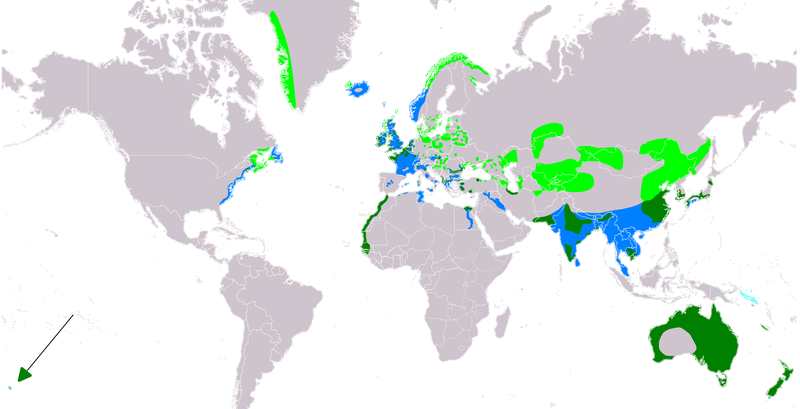CLICK ON PHOTO TO SEE HIGHER QUALITY IMAGE
Click external link here for detailed species information
Click external link here to see distribution map and to hear calls
The European Shag (Gulosus aristotelis) is of the cormorant family Phalacrocoracidae which is in the genus Gulosus. It occurs in northern and western Europe, the Mediterranean
Basin, parts of North Africa as well as parts of the Black Sea Coast.
This species breeds in colonies on coastal rocky cliffs and on offshore
islands. Can easily be confused with Greater Cormorant (Phalacrocorax carbo) but unlike that species, it is very rarely found inland on lakes or rivers.
Three subspecies are generally recognised :
- G. a. aristotelis – occurs in northwestern European Atlantic Ocean coasts
- G. a. desmarestii – occurs in the Mediterranean Basin and Black Sea coasts
- G. a. riggenbachi – occurs in northwestern African coasts
Patrick J. O'Keeffe / Raw Birds
European Shag (Gulosus aristotelis) distribution map
Breeding Non-breeding - winter
SanoAK: Alexander Kürthy, CC BY-SA 4.0 <https://creativecommons.org/licenses/by-sa/4.0>, via Wikimedia Commons

















